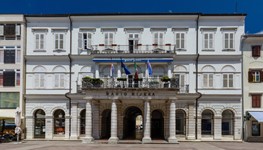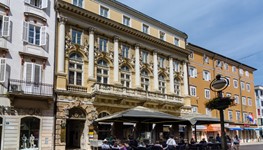Search result

The builiding of Radio Rijeka
The initiative for the realization of the seat for Casino Patriottico (Patriot Casino) goes back to 1845 when its construction was demanded by the Patriot Association, founded by twelve capitalists from Rijeka with Baron Gjuro Vranyczany as the head. The project for the building was made by a young architect Antonio Deseppi who got the job of the city aedile after successfully finishing the task in 1863. This is a classicistic two-storey building which today represents a monumental end of ...

Governor's Palace
The Governor’s Palace, one of the most significant Historicistic palaces in Rijeka, was built as a business-residential centre of the Rijeka governor. It was designed by Alajos Hauszmann from 1892 until 1893. The commissioner and the initiator of the project of the governor’s palace was the count Lajos Bathyány, therefore, it is no wonder that an established Hungarian architect Alajos Hauszmann, who had designed a series of royal and state institutions in Budapest, was select ...

Filodrammatica
At the site of the today’s Filodrammatica building on 28 Korzo Street, originally there was the Struppi house. After the house was bought by the Philharmonic Drama Association, a new edifice was built according to the project by the architect Giacomo Zammatti from Rijeka, who modelled it according to the middle European musical institutions. The building was formally opened in 1890. The influences of Italian high Renaissance and Mannerism can be distinguished on the street façade. ...

Casa Turca
The Turkish House, built around 1879, is situated next to the main market in Rijeka, at the crossing of the Guiseppe Verdi Street and Vatroslava Lisinski Street. This part of Rijeka on the stretch between the theatre and the city market, which was new at the time, was made by filling up during the 19th century and was imagined as the elite part intended for the modern development of shipping, Rijeka port and service and vital operations of the city. The house is famous under the name palace Bar ...
